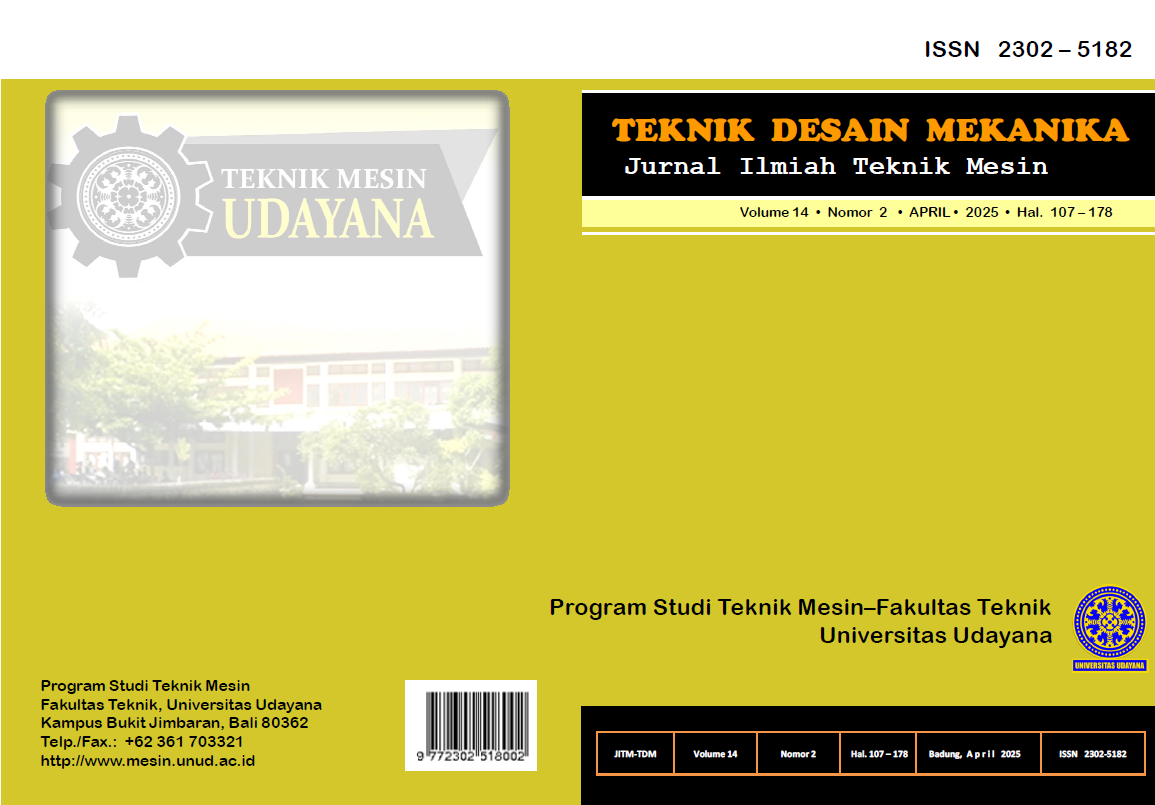Effect of NaOH Treatment Duration on the Impact Strength and Water Absorption of Ripoxy Matrix Textile Composites Reinforced with Agel-Cotton Ropes.
Abstract
The use of composite materials in the automotive industry has grown rapidly due to advantages such as strength, stiffness, lightness, and corrosion resistance. Natural fiber composite materials, such as agel-cotton woven fibers, offer advantages such as low density, low cost, environmental friendliness, and mechanical properties comparable to synthetic fibers. This study aims to investigate the effect of natural textile fiber types on the mechanical properties of impact tests and water absorption of textile fiber composites. The fibers used in this study are agel fibers woven with cotton yarn. This study examines the effect of soaking time in 5% NaOH for 1 hour, 2 hours, and 3 hours on the impact strength and water absorption of agel-cotton textile composites with ripoxy resin matrix. The testing was conducted by soaking agel-cotton woven fibers in a 5% NaOH solution with soaking time variations of 1 hour, 2 hours, and 3 hours. Impact tests and water absorption tests were then carried out using ASTM D 6110 and D 570-98. Based on the data obtained, the impact strength values increased in the warp and weft cut direction specimens with NaOH soaking time variations from 1 hour to 2 hours by 26.88% and 23.85%. However, the impact strength values decreased with NaOH soaking time variations from 2 hours to 3 hours in the warp and weft cut direction by 8.58% and 6.24%. This decrease was due to the prolonged alkali treatment time, which caused the fibers to become damaged, affecting the obtained impact strength. In the water absorption test, the highest water absorption values were obtained in the warp and weft cut direction specimens with NaOH soaking time variations of 1 hour by 3.27% and 3.50%. The lowest values were obtained with NaOH soaking time variations of 3 hours in the warp and weft cut direction by 1.69% and 1.86%. This decrease in water absorption values was due to the prolonged use of NaOH, which caused a reduction in the water absorption (hydrophilic) capacity of the fibers due to cellulose degradation. Degraded cellulose reduces the fibers' ability to absorb water.


